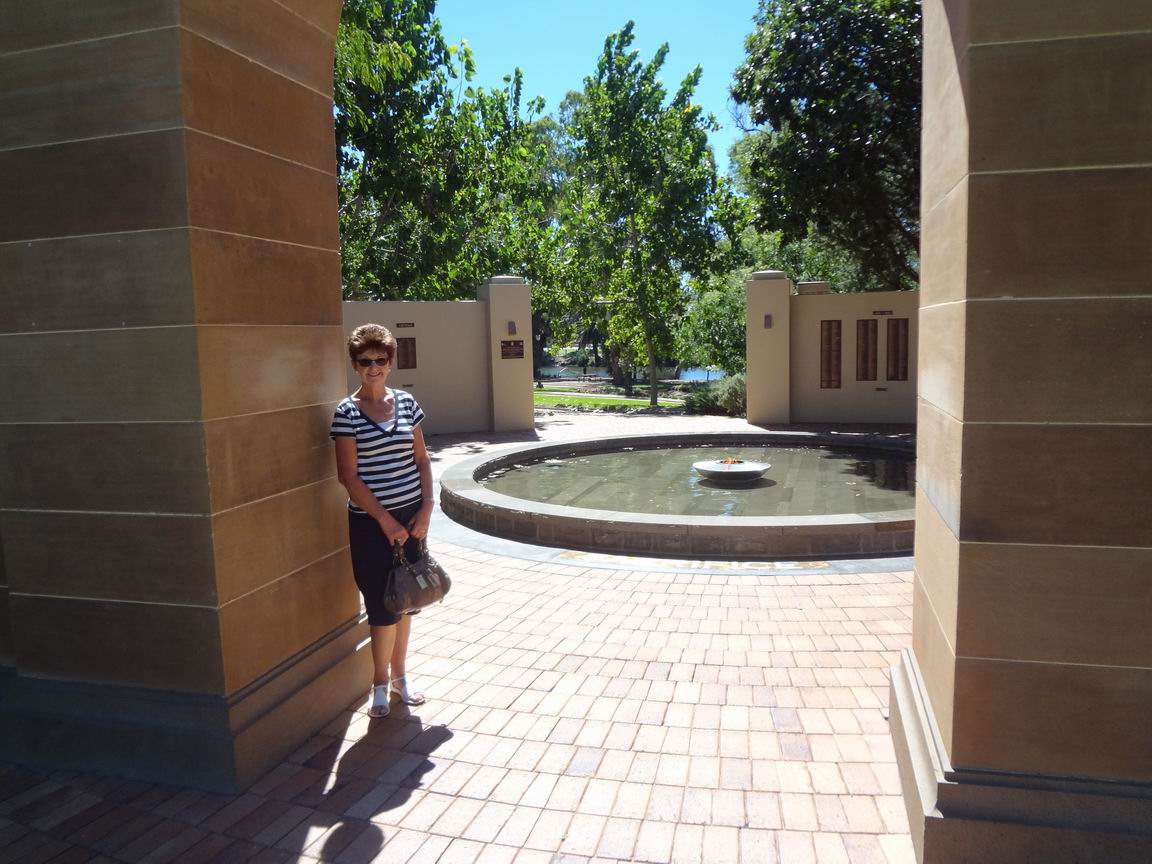
Dawn as we approach Airlie Beach – we were too large to have any chance of going a alongside, so it was a tender job.

Maureen & I were fortunate in being allocated to the above craft for the trip ashore, rather than a tender boat.
 Not that there was anything wrong with the tender boats it was all to do with speed. It was a win / lose situation we arrived at the destination quite quickly, but the faster boat being larger took longer to manoeuvre amongst small private boats to discharge the passengers. The ship’s tender being slower but smaller was able to nip in and out of the other small craft and the passengers from both vessels were disembarked at the same time. QED.
Not that there was anything wrong with the tender boats it was all to do with speed. It was a win / lose situation we arrived at the destination quite quickly, but the faster boat being larger took longer to manoeuvre amongst small private boats to discharge the passengers. The ship’s tender being slower but smaller was able to nip in and out of the other small craft and the passengers from both vessels were disembarked at the same time. QED.

We had visited Airlie Beach before, so knowing of the beauty of the place we were concerned that Cyclone Jasper (13 – 28 December 2023) might have caused a lot of damage. Fortunately, Airlie Beach had been spared to an extent.
I posted a blog about Airlie Beach in November 2022 so will not repeat myself as nothing seemed to have changed since our last visit.
The above beach scene is part of the man-made lagoon to protect people from box jellyfish which can kill an adult.
The day was hot, and I thought as the hair on my head was getting thinner perhaps I should buy a hat.
 The market near the beach, which is open whenever a cruise ship arrives, was the obvious place to buy a hat. I think the last time I wore a hat was during my time at sea in the early 1960’s so this was a big deal.
The market near the beach, which is open whenever a cruise ship arrives, was the obvious place to buy a hat. I think the last time I wore a hat was during my time at sea in the early 1960’s so this was a big deal.
I bought a hat (which can be washed in a washing machine) and wore it for the rest of our time ashore.
It did protect me from the sun, but it also caused excessive sweating and I think I used the hat more as a fan than a head covering – we live and learn.
Around 5.00 pm we sailed from Airlie Beach to Yorkeys Knob near Cairns.
 Flat calm as we slowly edge to our place to anchor.
Flat calm as we slowly edge to our place to anchor.

Prepare the tender boats.

Tender boats away!

We soon built up speed.

It wasn’t long before we were at a boat harbour where Maureen & I stepped ashore with the idea of visiting the small town of Yorkeys Knob, which we had seen during a holiday in Cairns in 1992. It was a short drive from Cairns and just about to be developed.
We looked around a very busy carpark area, coaches being filled with tourists from the ship who had booked various tours. We needed to know how far it was to walk from the arrival area to the centre of Yorkys Knob.
So I asked a tour guide who was ‘collecting’ her ‘flock’ for a tour to somewhere inland.
She pointed to a man controlling tickets and she said get a ticket from him. So, we obtained a ticket at a cost of $25 each (which I thought was expensive for such a short drive, but perhaps my memory was not what is was thirty-two years ago and it was further than I anticipated.
Once the coach was full it pulled away and the driver gave a short chat of welcome as we speeded through a small town. When he reached the end of his welcome chat, he mentioned that the drive to Cairns would be about twenty minutes!
Our small problem was that we did not wish to visit Cairns having visited the place a few month earlier, but we didn’t have a choice – welcome to Cairns, and being a Sunday many shops would not open until lunchtime.

The above is the Crown Hotel, (think pub) which was opened in 1886, but closed as we made our way to a shopping centre.
We walked from the drop off point to the shopping centre that we knew would be open and treated our time in Cairns as a form of exercise – it was easier than walking around the ship.
The driver on our return gave a talk of the damage to Cairns during the Cyclone Jasper (13 – 28 December 2023).
We saw fields still flooded, rail lines damaged, and we were told that three aircraft had been moved to higher ground but all three were flooded and were complete losses.

Cairns Airport during the cyclone. Flood damaged aircraft can be seen.
Our next port of call would be Port Douglas which is 57 km (35 miles) from Yorkys Knob. I believe we took our time and anchored about midnight off Port Douglas.

Port Douglas in the distance- another tender job, but once ashore it was a short walk to the town centre.
I posted about Port Douglas in November 2022 – nothing had changed, and it was still very hot, and my new hat-fan came in handy.
We sailed for Willis Island (a weather station) at 6.00 pm at a speed to arrive just after breakfast.

Sunrise at 05.50 hr as we steered right into the sun heading for our visit to Willis Island. We approached the island slowly & without stopping the ship became tax free. (Think duty free drinks).
Check the November 2022 post for the history of the islands & why Australia has four people living on the island.

An interesting place, but I doubt that I’d be keen to spend months on the island.
Next stop Brisbane.


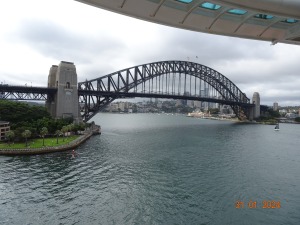
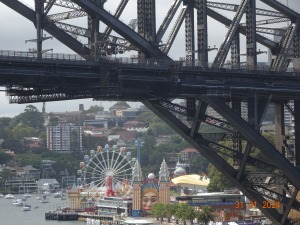
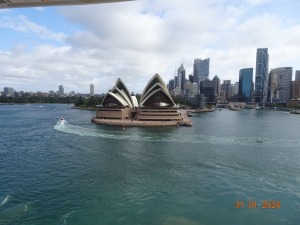 The Opera House, which used to be a tram terminus – the Opera House opened in October 1973.
The Opera House, which used to be a tram terminus – the Opera House opened in October 1973.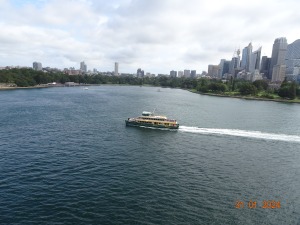
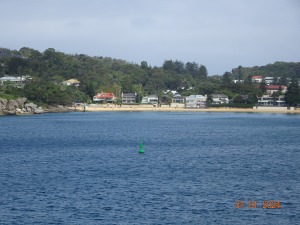
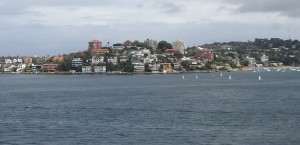
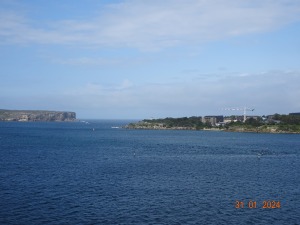
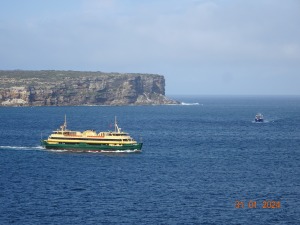
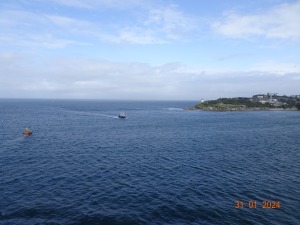
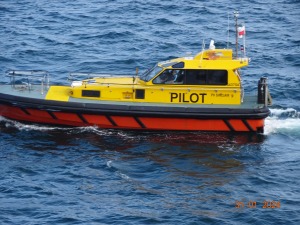
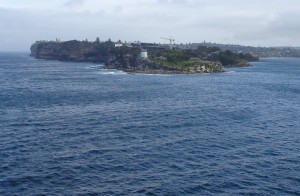 South Head of Sydney Harbour, pilot has disembarked, full ahead and the cruise has begun.
South Head of Sydney Harbour, pilot has disembarked, full ahead and the cruise has begun. 

 is scanned. The Medallion system worked very well. I have explained how the system works in earlier post, but will be happy to go into detail if asked.
is scanned. The Medallion system worked very well. I have explained how the system works in earlier post, but will be happy to go into detail if asked.


 I am writing this on the 16th December and a few days ago the island staff were evacuated due to tropical cyclone Jasper. Click below for the short film.
I am writing this on the 16th December and a few days ago the island staff were evacuated due to tropical cyclone Jasper. Click below for the short film.








 The morning that we arrived I took the above photo – thick fog perhaps – but it was condensation on the lens of my camera as I stood on our balcony for less than thirty seconds.
The morning that we arrived I took the above photo – thick fog perhaps – but it was condensation on the lens of my camera as I stood on our balcony for less than thirty seconds.





















 Because it was a Sunday the motel was very quiet – on arrival we were the only car in the car park area. Later, a number of others arrived or returned from days out sightseeing.
Because it was a Sunday the motel was very quiet – on arrival we were the only car in the car park area. Later, a number of others arrived or returned from days out sightseeing.
